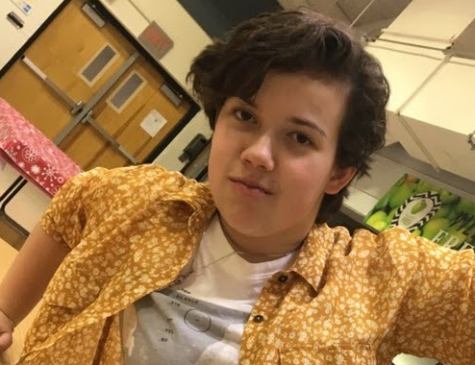The Gabby Petito Case and the Sensantionalization of White death
November 28, 2021
The case of Gabby Petito and her missing fiance was quick to secure its chokehold on the nation, with every news outlet constantly updating the general public during all points of the day. The case even made its way onto prominent social media platforms such as Twitter, Instagram, and most notably TikTok.
Here are the basics: Gabby Petito and her fiance, Brain Laundrie, started their cross-country trek in early June of 2021, documenting their experiences and giving online travel advice to Petito’s substantial social media following. On August 21st there was an incident report, with the police getting involved after an altercation between Laundrie and Petitio. The bodycam footage of Petito in tears and obviously bruised around the neck is available on many news sites. Laundrie returned home on September 1st without Petito and fled from his family home on September 13th. Petito was reported missing on September 11th, and her remains were found on September 19th. Recently, it has been reported by the coroner’s office that Gabby was strangled to death and that she died three to four weeks before her body was found (WINK).
A seemingly confounding, but otherwise standard case of a white woman being murdered and the husband being the prime suspect in her murder. So what made this case spread like wildfire? NPR media correspondent David Folkenflik suggests that it is a classic case of “white woman syndrome”. He explains that this phenomenon is an observed disproportionate media coverage of missing-person cases involving young, white, upper-middle-class women or girls. “This is a young woman, and this is a young white woman,” Folkenflik says, “and time after time, news organizations have shown again and again that those are the people to whom they are going to spend a wildly disproportionate amount of time on, elevating what are individual tragedies, individual mysteries into seemingly national obsessions.” (NPR). We can see other examples of this “white women syndrome” in the media as well – Jon Bonet Ramsey, Stacy Peterson, and Natalie Holloway, all young white women murdered and their cases sensationalized.
Still, what statistics can we back this against? Can it truly just be the case that only white women’s murder cases are sensationalized? The Missing and Murdered Indigenous Women movement (MMIW) would disagree, citing that “as of 2016, the National Crime Information Center has reported 5,712 cases of missing American Indian and Alaska Native women and girls.” (Nativewomenswilderness.org). This alarming number has been up since 2016 and continues to grow without proper recognition from the media or the federal government. The MMIW movement, amongst others, continues to fight for national recognition to solve these cases – the effort to combat the destructive and biased white women syndrome is never-ending. Undoubtedly, the case of Gabby Petito is one of tragedy and misfortune, but it is equally significant to acknowledge the thousands of similar cases that are subjected to the ignorance of the media.


